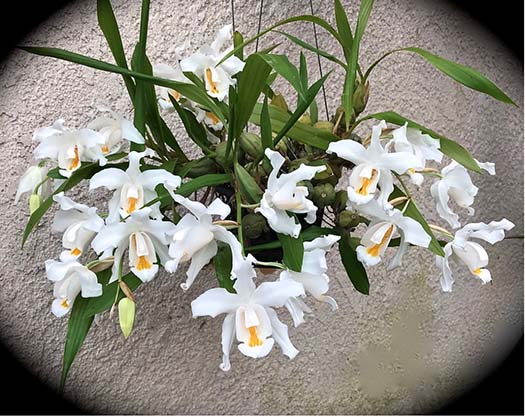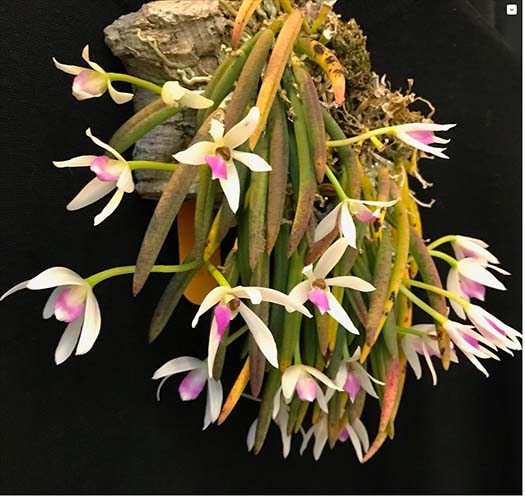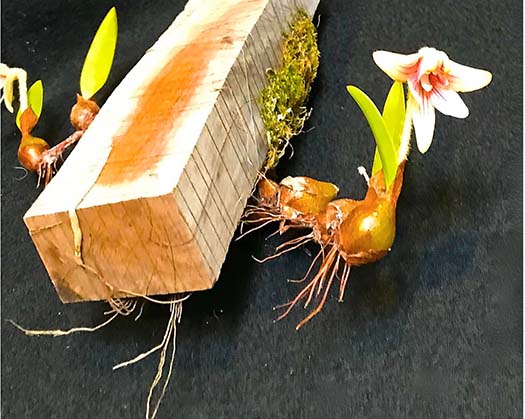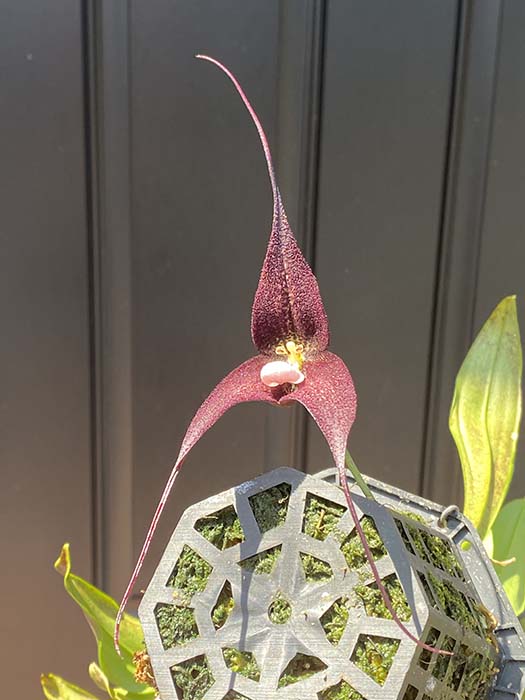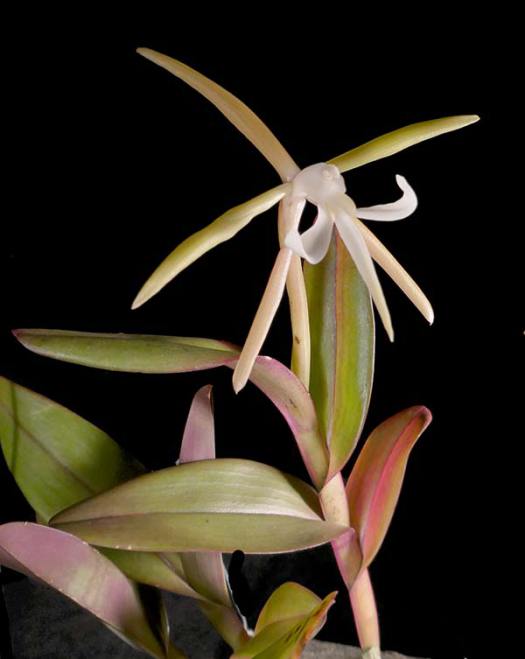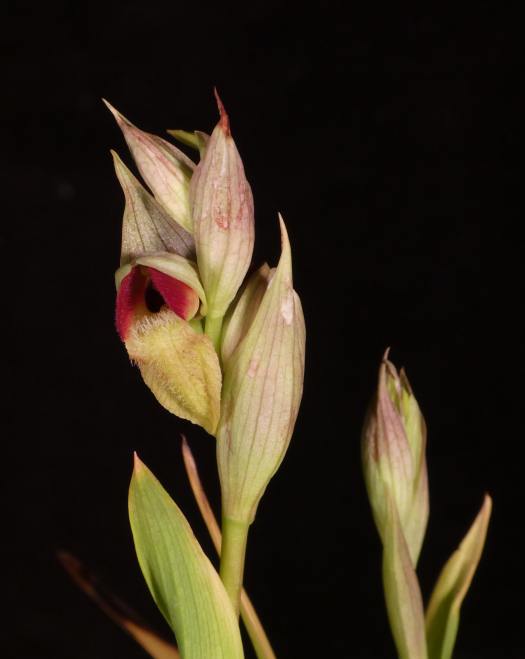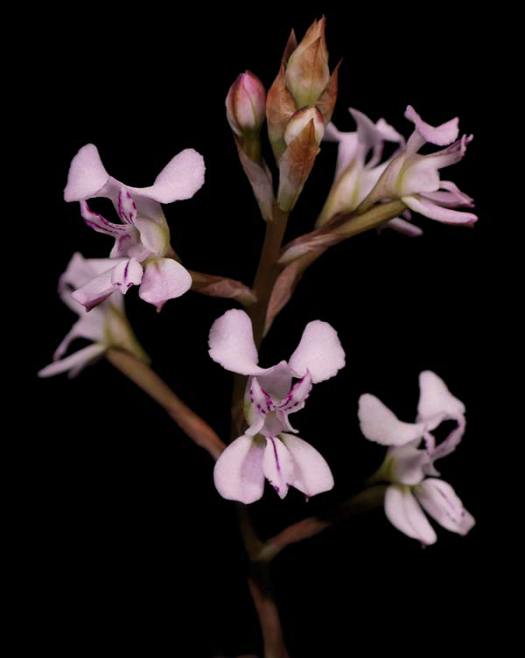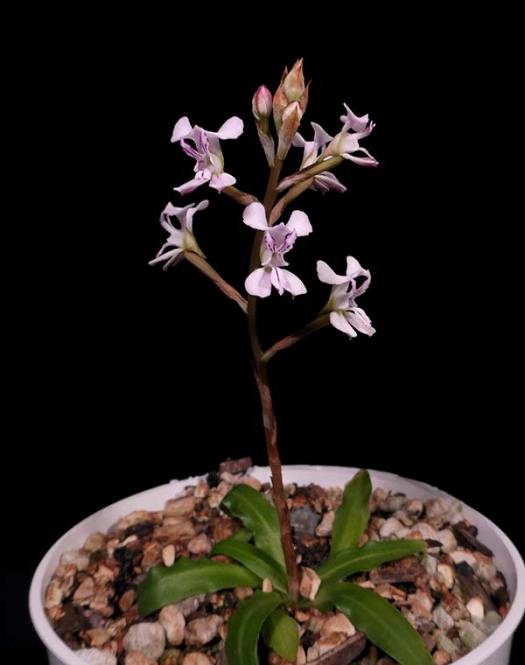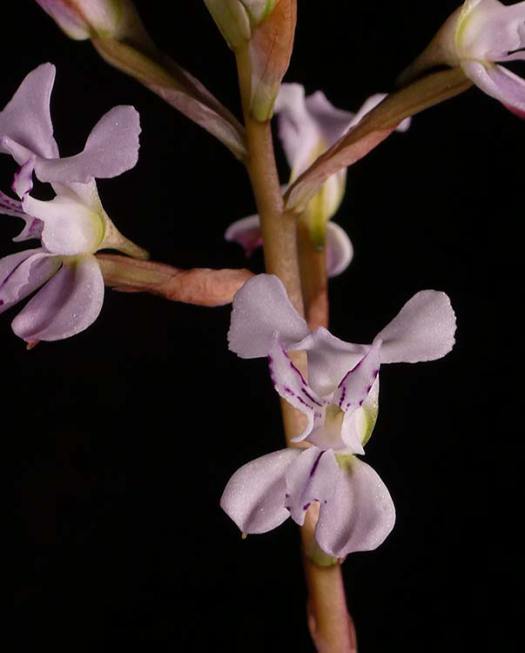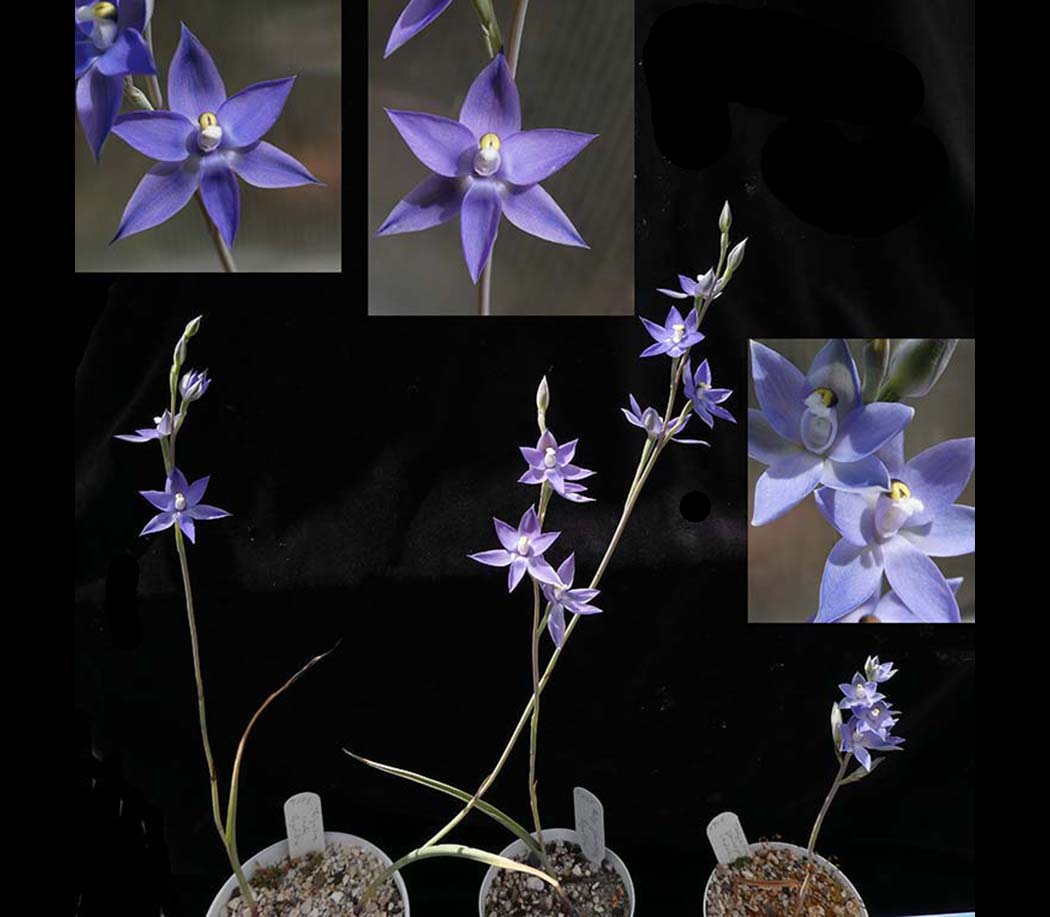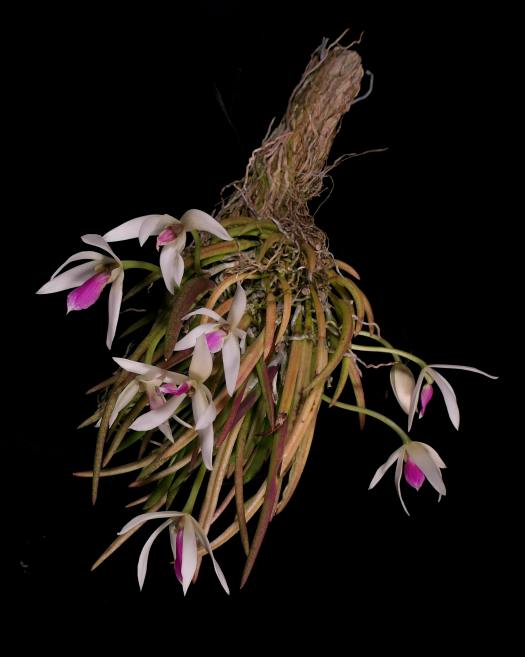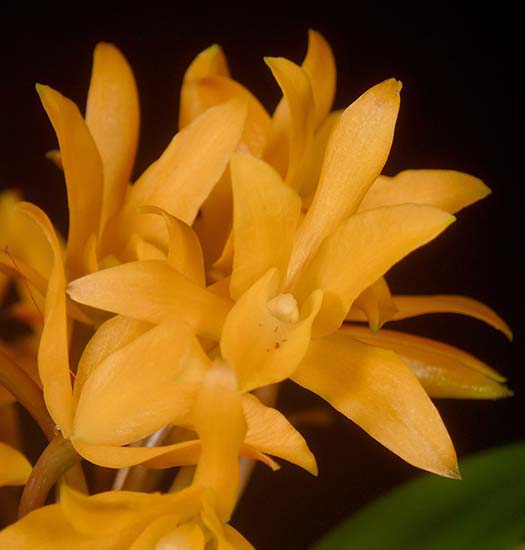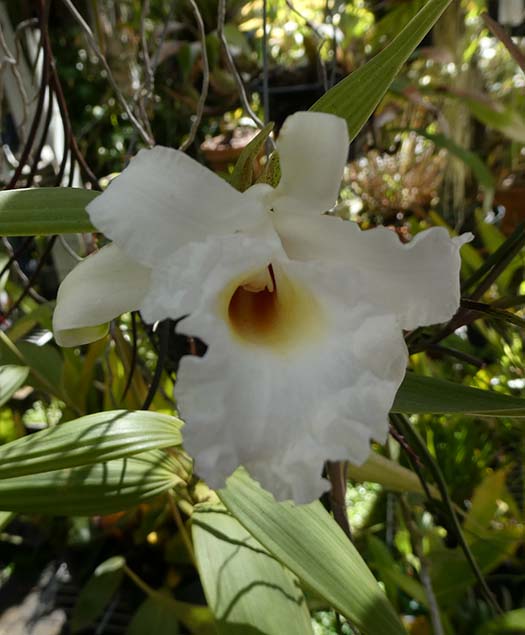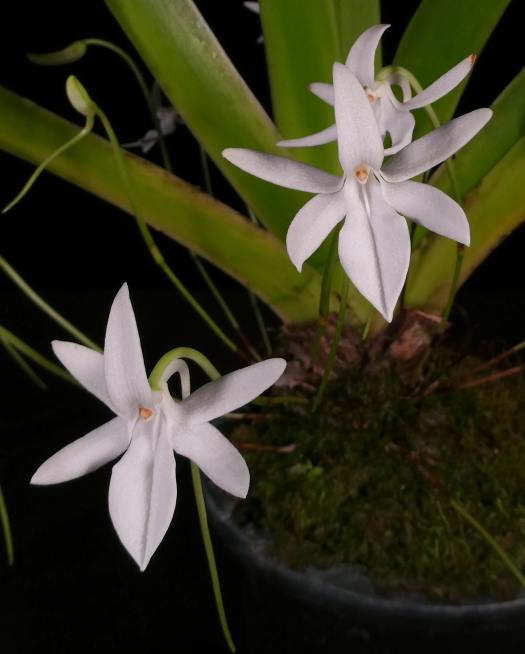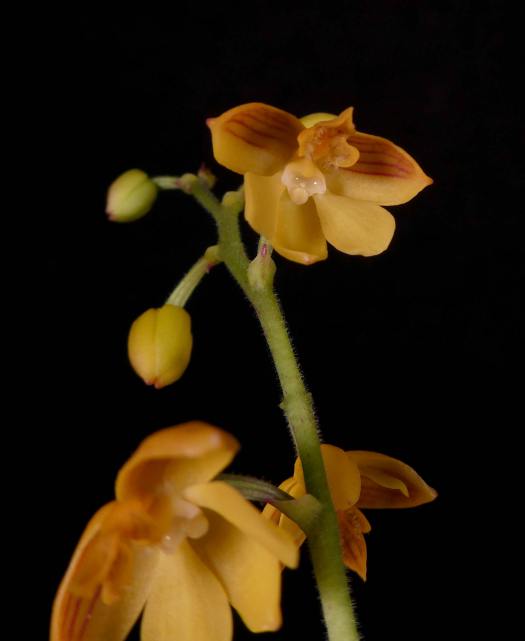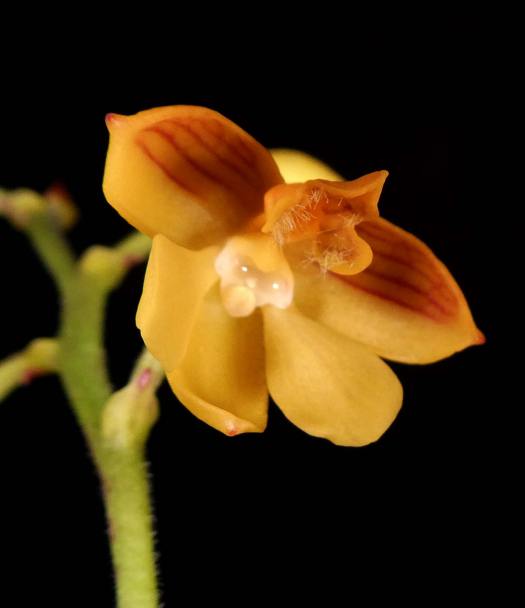May 2021
From Lynn Wiand:All orchids grown outdoors, coastal southern California |
|
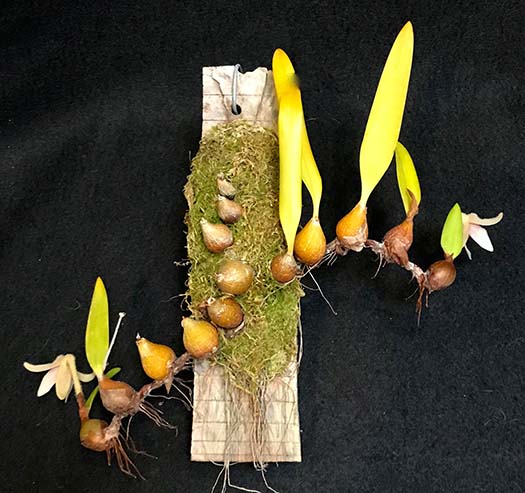 |
|
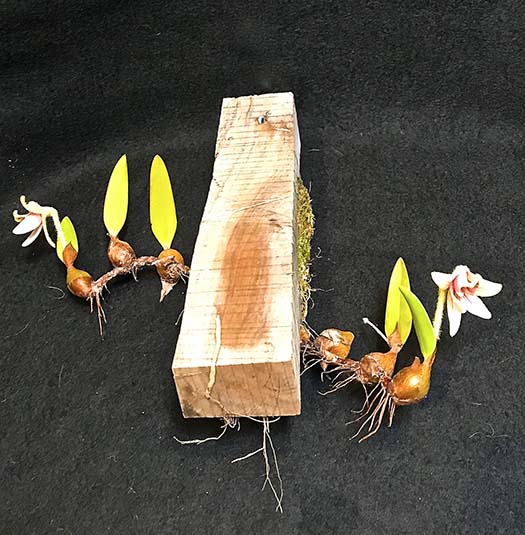 |
|
 |
Octomeria juncifoliaFrom Brazil |
From Scott McGregor:All orchids grown outdoors, coastal southern California |
|
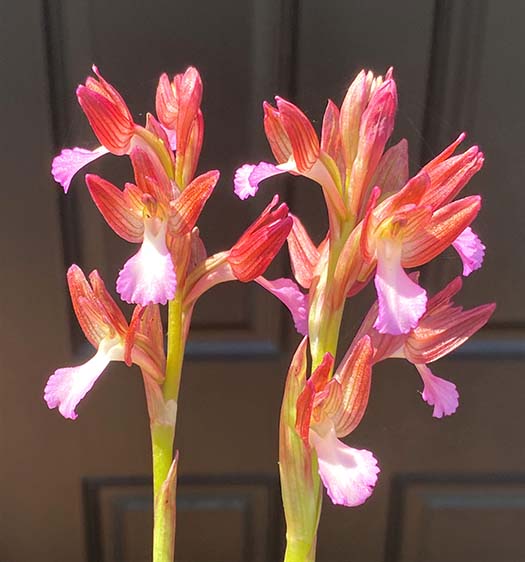 Anacamptis papilionacheaEuropean terrestrial, known as the “pink butterfly orchid”, common to the hot and dry countries bordering the Mediterranean. Winter growing in full sun December to April, summer dry/dormant. |
|
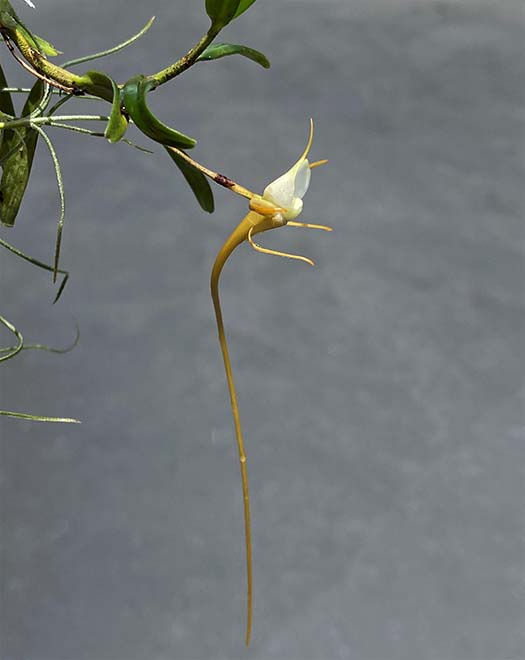 Angraecum conchoglossumFrom Madagascar and Reunion Islands, this small Angraecum species has a relatively long nectary for the size of the flowers. I grow it outdoors and mounted with some Spanish moss for extra humidity, in bright light, and watered frequently. The canes hang downward and the flowers emerge below the canes. The photo above shows a side view of the flower. |
|

Dracula roezliiFrom Columbia, flower spikes emerge throughout the year through the bottom of the basket. |
|
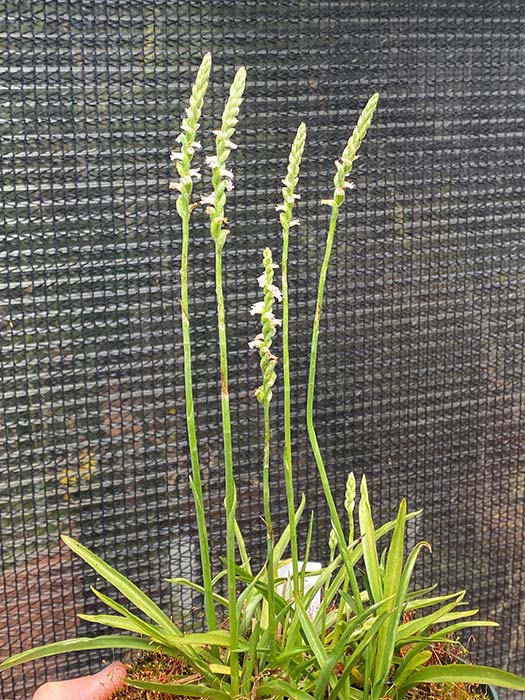
Spiranthes sinensisA good outdoor grower from China, with sweetly scented flowers that open sequentially in a spiral upward along the spike (hence the genus name). This seems to be an alba version as the type species is usually pink. It flowers from late Spring into Summer. |
|
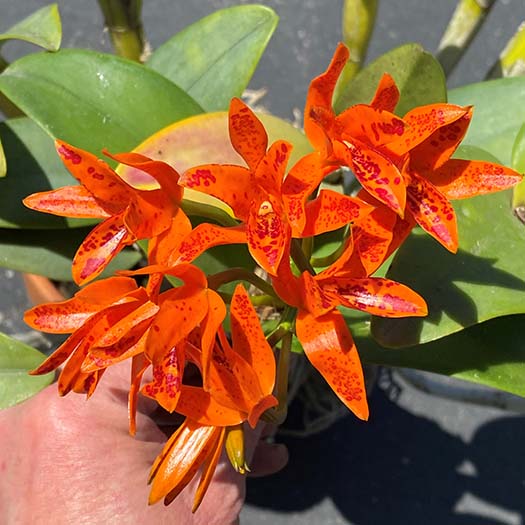
Guarianthe (Cattleya) aurantiaca 'Orange Spots'Lots of orange, and this is a spotted variety. |
|
 |
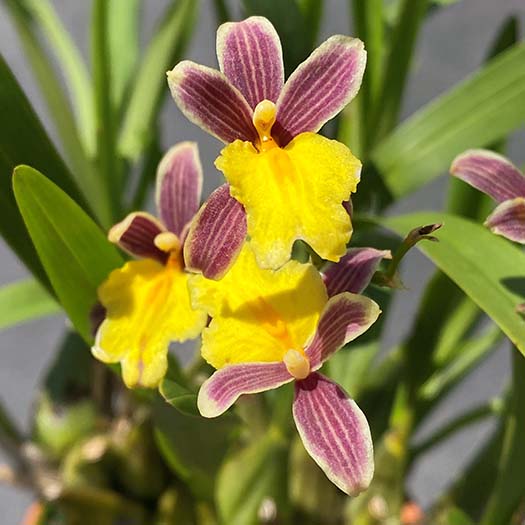 |
Mexicoa ghiesbreghtianaA cool-growing epiphyte from the mountainous oak forests in Southern Mexico. I find this to be an easy outdoor species, although the flowers are exceptionally attractive to slugs. |
|
Thelymitra dentata X glaucophylla "striped"A primary hybrid of the Australian T. glaucophylla and New Zealand T. dentata. Violet-lavender flowers with blue stripes (from T. dentata)! Thelymitras are “sun orchids” that only open on perfectly sunny days, and grow well outdoors in our Mediterranean climate. |
|
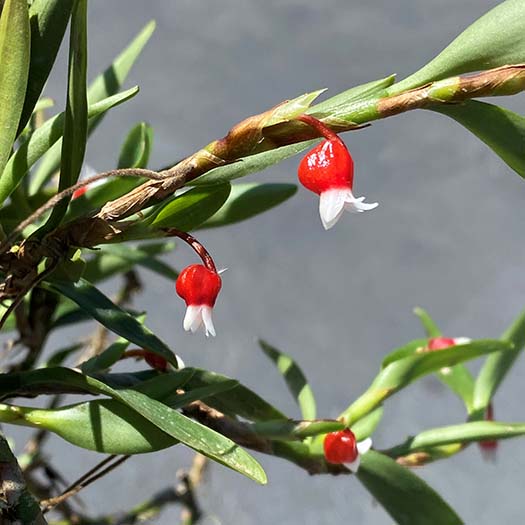 |
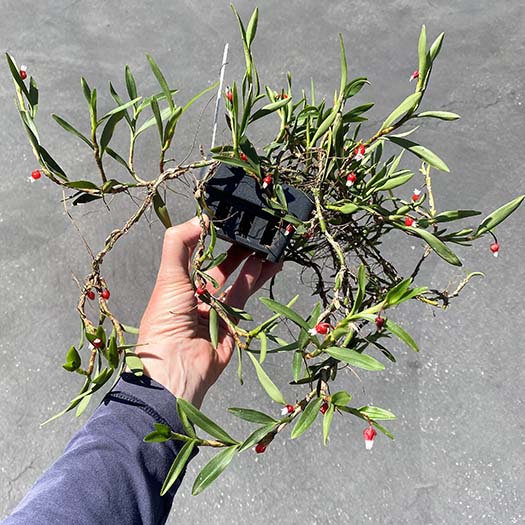 |
Mediocalcar versteegiiA rambling species from New Guinea that grows well outdoors and the red and white flowers differ from most other common Mediocalcar species that have candy-corn orange and yellow flowers. |
|
 |
|
Mediocalcar bifoliumVery similar to Mediocalcar versteegii. There is a lot of muddy taxonomy in the New Guinea species, especially with all the Dendrobium size, shape and color variations. |
Med. bifolium and Med. versteegii side by sideM. bifolium on the left and versteegii on the right (plant is behind). It seems bifolium has the flowers more nestled into the terminal leaves whereas versteegii has 8mm or so stems on the flowers. OK, a stretch - same or different? |
From Roberta Fox:
|
|
Outside in the Back Yard: |
|
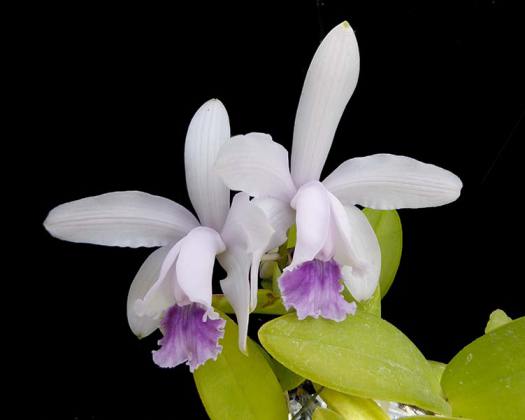 Cattleya intermediaAbove, fma. coerulea. Right, fma. amethystina. This is their time of year. These two are just a sampling of a species with lots of color forms. This species, from Brazil, is very cold-tolerant and grows easily in my back yard. |
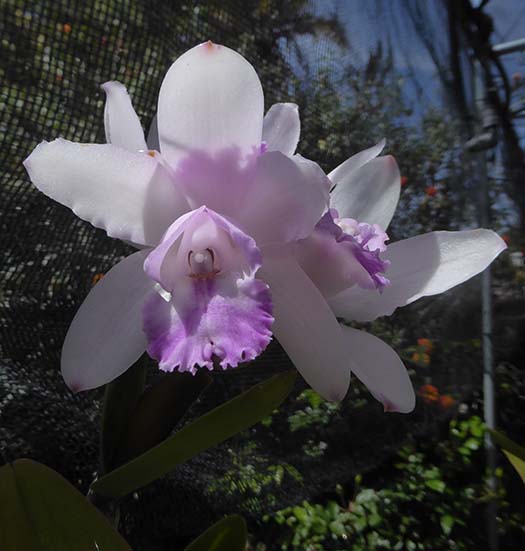 |
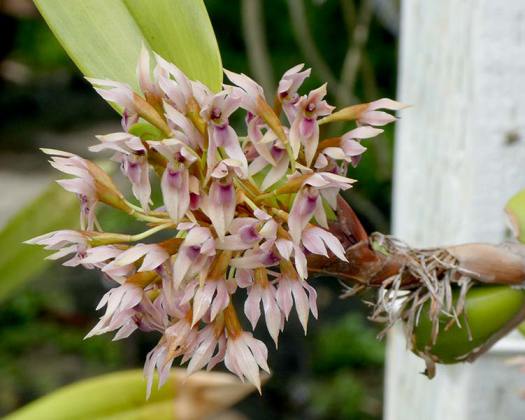 |
|
Maxillaria densaNative to Mexico and Central America. There are some roots in the pot, but the plant also has an extensive root system through its entire length. The dry sheaths surrounding the internodes between the pseudobulbs protect those roots, and so must not be removed. |
|
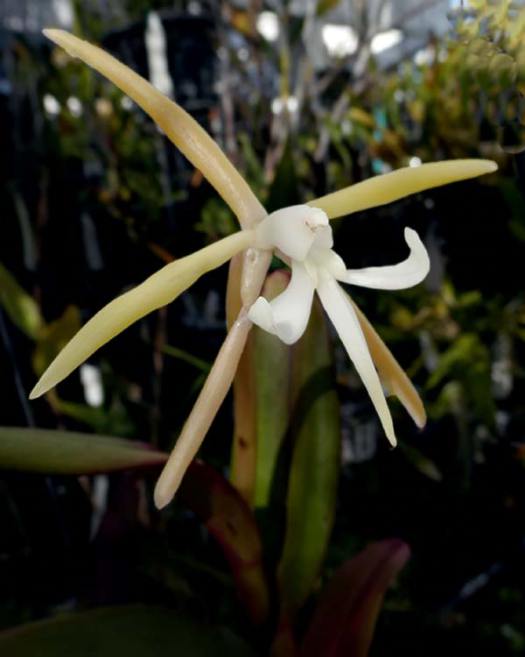 |
|
Epidendrum nocturnumThe species is native to a wide range of the tropical Americas, from Mexico through Central America, Ecuador and Brazil. Usually, the side lobes of the lip are fuller and in the same plane as the center lobe. but on this one they have a whimsical flip. It is night-fragrant. |
|
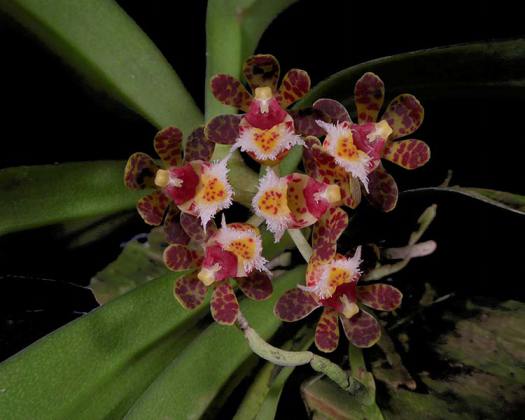 Gastrochilus calceolarisNative to a wide range of southeast Asia, at elevations from about 100-2500 m. The inflorescence hangs below the leaves, facing downward. It is necessary to get underneath, or turn it sideways, to appreciate the flowers. |
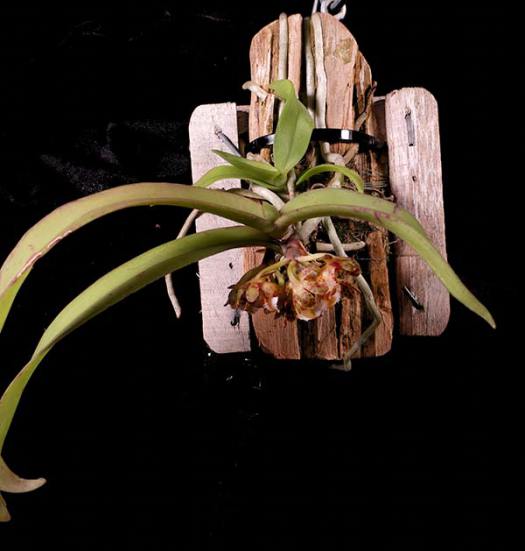 |
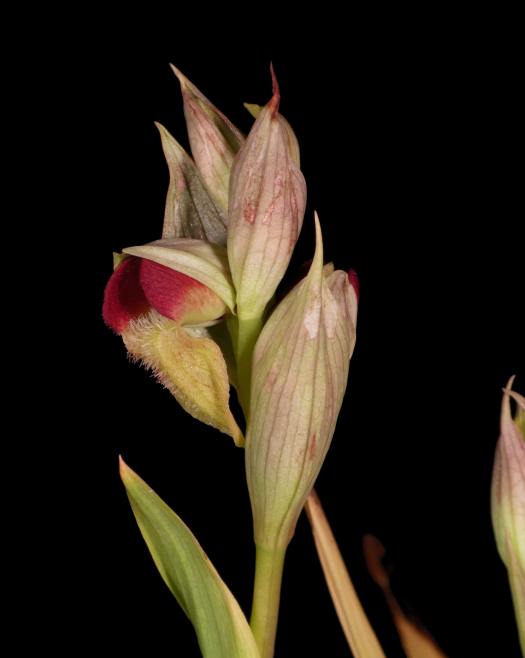 |
|
Serapias bergoniiGrows throughout the Mediterranean area. Dormant (and kept dry) in summer, watering through the winter brings flowers in the spring. |
|
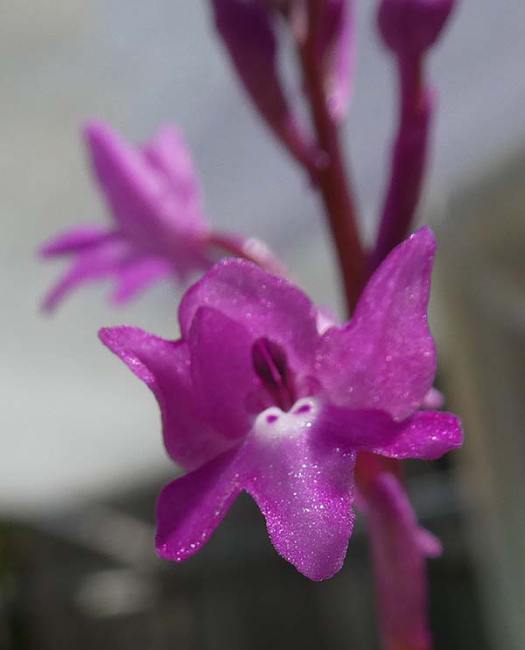 |
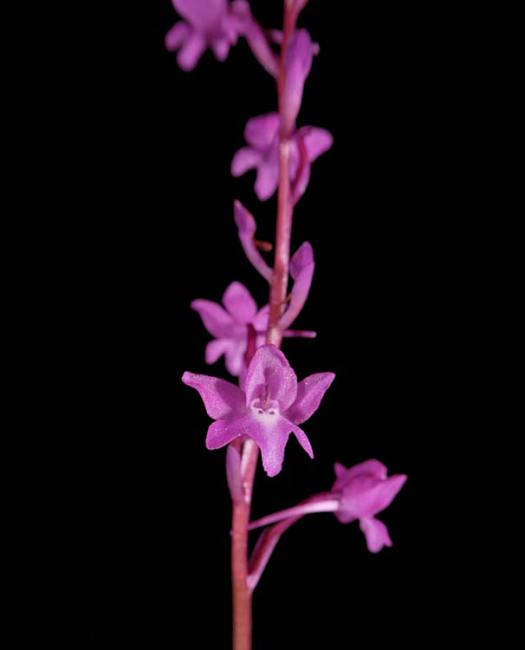 |
Orchis quadripunctataAnother terestrial from the countries surounding the Mediterranean. The name implies four spots, I only count two... |
|
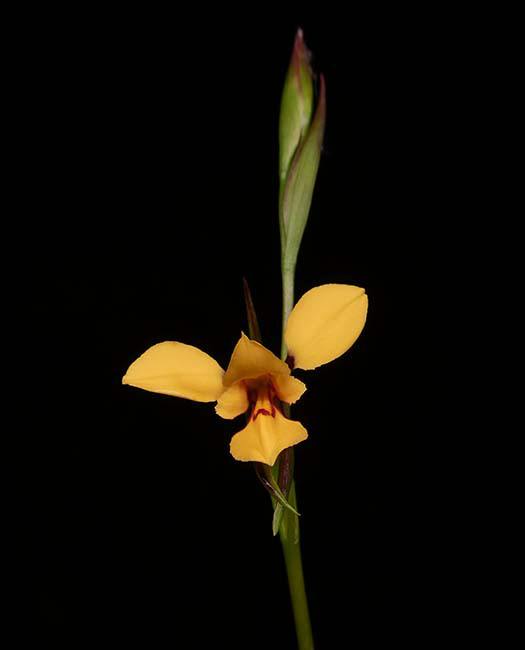 Diuris drummondiiOne of the last of my terrestrials... Native to Western Australia. There are very few places in the world with a Mediterranean climate, characterized by hot, dry summers and cool, rainy winters. (Sound familiar?) The Mediterranean, western and southwestern Australia, the Cape area of South Africa, the central coast of Chile, and coastal southern California. |
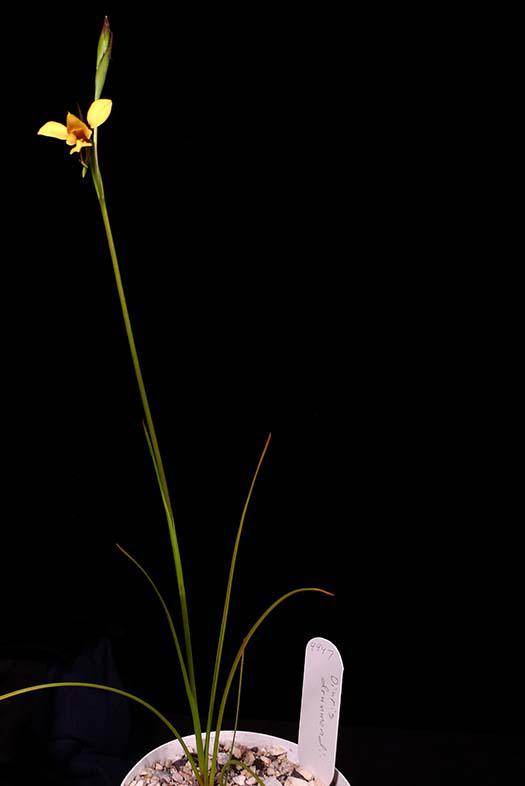 |
Disa sagittalisNative to the Cape provinces of South Africa. It appears to have a shorter dormancy than the other Mediterranean-type terrestrials. I start watering it when I start Pterostylis curta, in early August, 2-3 months earlier than the Australian and European ones, and that seems to be the secret. (Note that the other terrestrials have mostly gone dormant, even while they were still in bloom, while this one is still very green.) I have had no success with the riparian members of the genus (like the magnificent Disa uniflora) and have stopped trying. This one grows in slightly drier areas such as open meadows, in rocky soil, and seems to be more amenable to the culture that I can give it. |
|
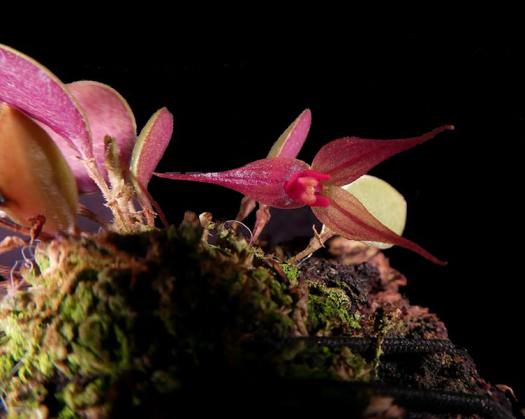 |
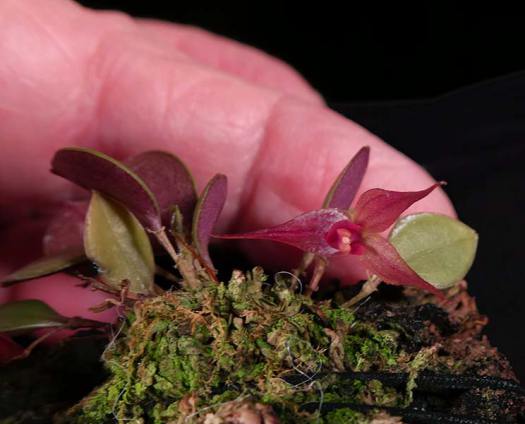 |
Lepanthes grandifloraOne approach to the "need for new orchids" while running out of room is to focus on miniatures, and that's the direction in which I'm heading. The name implies that the flower is large... well, it IS large compared to the size of the plant, twice as big as the leaf. |
|
Ansellia africana var. aureaAurea means "yellow", and that certainly fits. I have seen these also described as "alba", meaning "absence of anthocyanin, red/purple pigment" which also fits. Flowers are smaller than the usual Anselia africana, but there are lots of them. The pot is quite over-crowded, so it produces "bird's nest" roots. The species can grow as either an epiphyte or lithophyte, and these roots are an adaptation to limited space, catching detritus to nourish itself. |
|
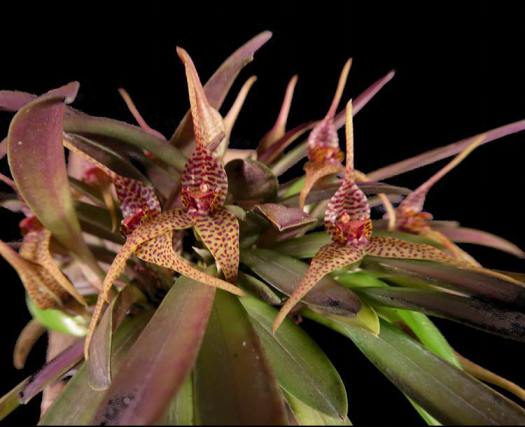 Dryadella zebrinaNative to Brazil, Colombia and Peru at elevations from 1500-3500 m. It is a little flower machine. Since the flowers aren't brightly colored, it's easy to miss until suddenly it's in full bloom. |
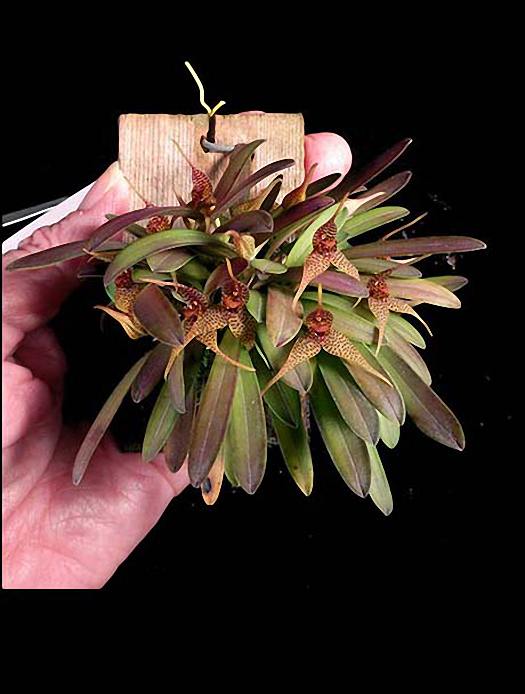 |
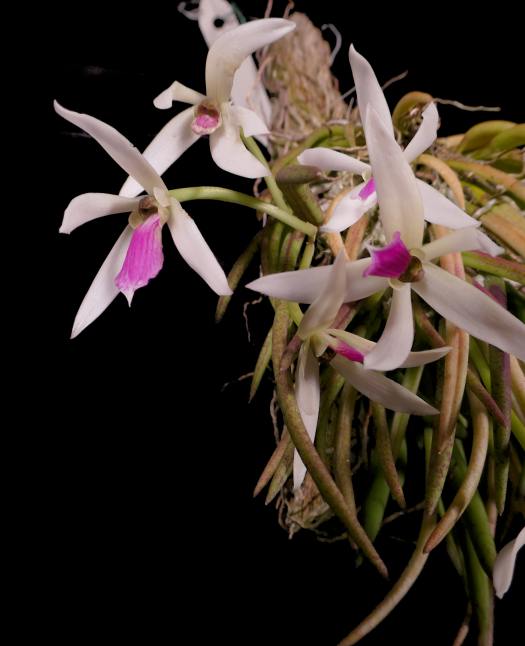 |
|
Leptotes bicolorFrom Brazil. It grows easily in filtered sun. I have found that it needs to be mounted (at least under my growing conditions) - it dies in pots, languishes in baskets but grows vigorously tied to a small stick. |
|
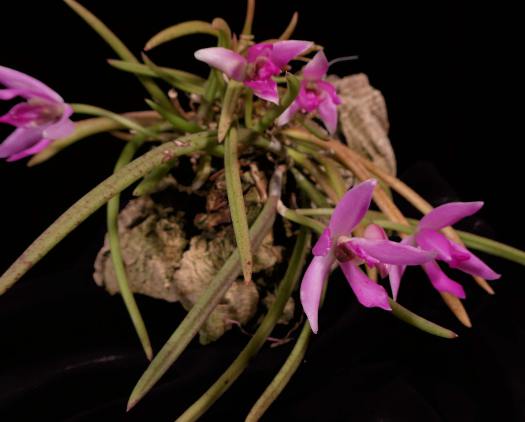
Leptotes pohlitinocoiFlowers and leaves are somewhat smaller than Lpt. bicolor, but grows under the same conditions. |
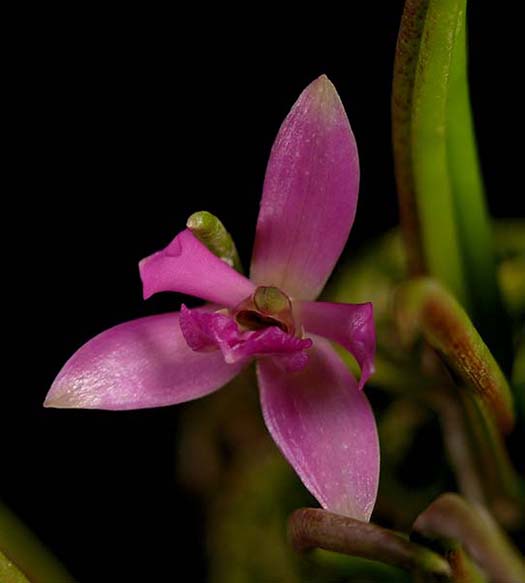 |
In the greenhouse... |
|
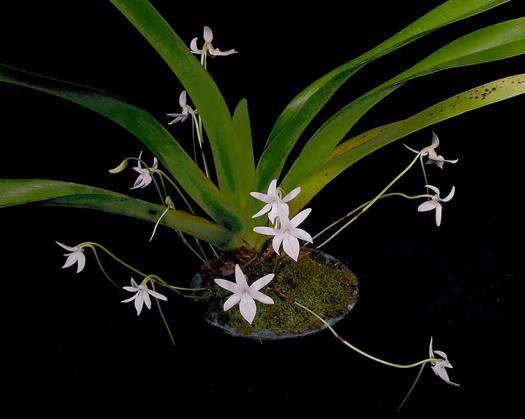 Jumellea arachnanthaNative to Madagascar. In the evening espeically, it is reminiscent of a cloud of brilliant white, fragrant little stars. Baker has some conflicting data - it is possible that it comes from high enough elevation to grow cooler, but it's doing so well in the greenhouse, I'm not going to risk a good thing. |
|
 |
|
Polystachya paniculataCentral Africa at moderate elevations |
|
Polystachya pubescensSouthern Africa. "Pubescens" means "hairy". Need a close up photo to see it, and necessary to get under the flowers since they nod downward. It may grow cooler - it does well in the greenhouse, but Baker indicates that it comes from far enough south to experience night temperatures similar to ours. |
|
